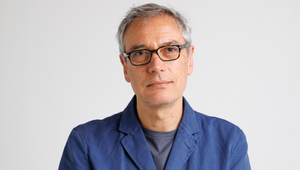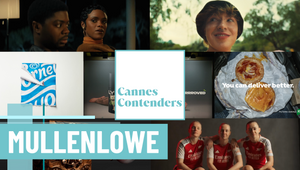
Artificial Intelligence – Theory Into Practice (and Into Controversy)

Art contests are usually controversial solely because the aesthetics of art are so subjective. However, the latest art controversy arose because of a cutting-edge technical question: is art created by artificial intelligence really "art" at all?
Jason Allen won this year's Colorado State Fair digital arts competition by creating his work with Midjourney, which is an artificial intelligence (AI) program that, like DALL-E 2 and Stable Diffusion, can turn user-generated words into an image. Allen explained that the creation of the work took about 80 hours to build – from having the AI create the first versions of the image to the Photoshop editing that he used to reach the final visual that was then printed on canvas. Reading beyond the headline, Allen clearly used his creative (and technical) skills to build the final image that he submitted.
This story is interesting because, despite the sensationalist headlines that artificial intelligence is going to take over all our jobs, the fundamental truth – even in the area of creativity – is that humans are still needed to determine what image ‘works’ and to fine tune the end-product (although AI will probably get better at this). The work of an artist or a creative person may change in its technique and technology, but creativity itself will never go away.
That is not to say that technologies such as AI and ‘deepfakes’ (which uses deep learning AI to create a video or image that is so hyper-realistic it is very hard to tell that the depicted image is fake) are not going to transform the way that we create and produce content. Some agencies are already playing around with this technology to varying degrees. But the real question is how these artificial technologies will disrupt the way we consider and approach art, work, or content creation.
Already, people have been racing to redefine art in the context of digital technologies, now even more so within the context of tools like Midjourney and DALL-E 2. This is important because these AI engines are acquiring artistic styles from ‘learning’ about existing art and then generating artwork that resembles the desired artist’s style. You can now use these programs to create an ad featuring a yellow unicorn on the beach in the style of Jackson Pollock or a portrait of a brand spokesperson as if it were rendered by Rembrandt.
These AI models can effectively help our industry – we can prepare spec work for clients in pitches with less unrecouped costs, art directors can prep work before it gets produced much faster, and we can even use artificial intelligence for copywriting to facilitate the drudgery and focusing on the creativity that is the hallmark of our work.
Are you feeling uncomfortable at the thought of AI being used this broadly? You are not alone. In a recent conversation, my colleague’s first reaction to employing AI was that we shouldn’t use this because our clients generally pay by rate card – if a copywriter or an art director were using AI to work faster or better, we would miss out on a higher fee.
There is also a potential danger to genuineness inherent in using AI technologies. These content generators can be, and have been, used to create and spread fake news or misinformation, relying on the fact that it can be virtually impossible to distinguish real images from fakes. There is a growing scrutiny in the public's eye when sensational or controversial images or videos are presented, with everyone looking for evidence that a deepfake, filter, or Photoshop trick has been used. While brands such as Hulu, State Farm, and ESPN have used these techniques for eye-catching ads, we should always be mindful of the dangers and limits of these technologies. And as we learn how to mitigate these risks, we will also be forming new ways of generating and interacting with creative content.
We shouldn’t be afraid of the change and challenges presented by artificial intelligence. Yes, the advent of AI in the creative space means we probably need to change the way we approach many issues, from the concept of genuineness to the way we are compensated by our clients for work that can be performed faster and more efficiently. However, limiting the way we embrace technology because of our reliance on an outdated business model is not a ‘win-win’ in any situation. If we are going to see our business transformed by AI technologies – and it will happen – then from our client meetings all the way to the judging tent at the state fair, we need to understand that our human creativity is still front and centre, and is still the premium we offer our clients. Through AI, it will just gain a little help.
---
Veronica Millan is global chief information officer at MullenLowe Group. She writes a regular column about the metaverse for Little Black Book - check out the rest of the series here.















